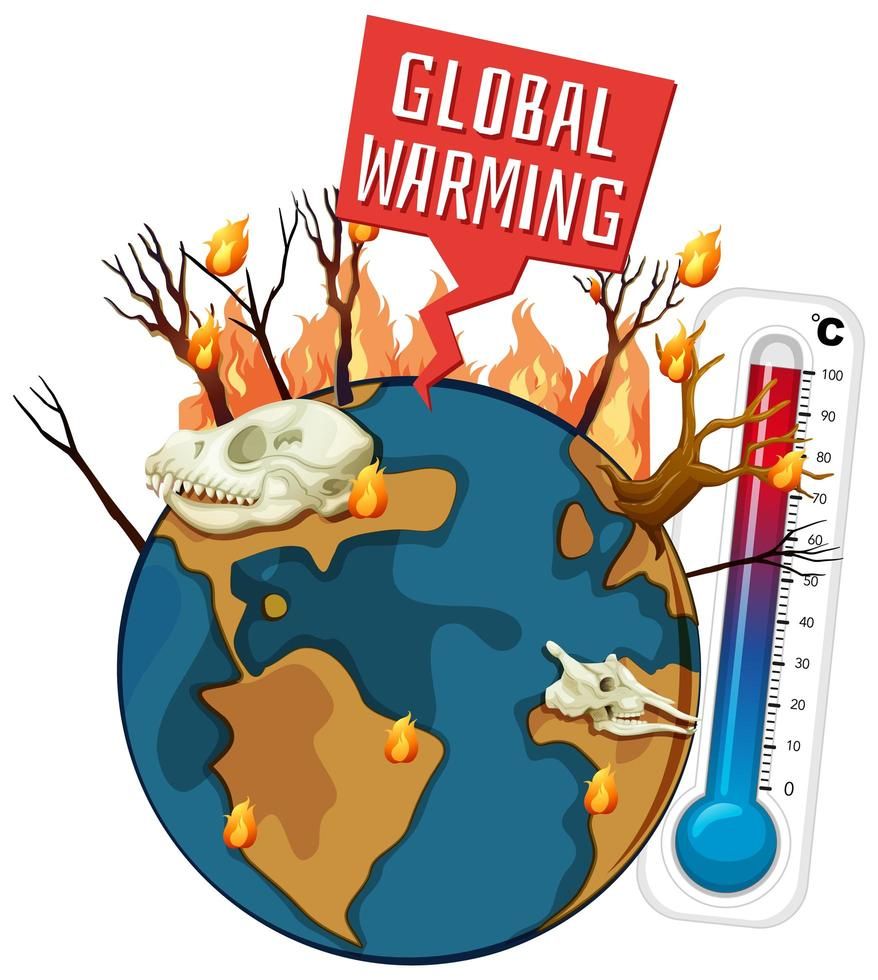Global Warming: The Catalyst for Changing Weather Patterns Worldwide
Global Warming: The Catalyst for Changing Weather Patterns Worldwide

Global Warming: The Catalyst for Changing Weather Patterns Worldwide
Global warming, driven by human activities, is causing significant changes in weather patterns around the world. This phenomenon is characterized by the long-term rise in Earth's average surface temperature due to increased levels of greenhouse gases, such as carbon dioxide (CO₂), methane (CH₄), and nitrous oxide (N₂O). The impacts of global warming are evident in various regions, including the United States, Pakistan, and many other parts of the globe. This article explores the causes of global warming, its effects on weather patterns, and the specific impacts on the USA and Pakistan.
Causes of Global Warming
- Burning of Fossil Fuels: The combustion of coal, oil, and natural gas for energy and transportation releases significant amounts of CO₂, a major greenhouse gas.
- Deforestation: Trees absorb CO₂, and deforestation reduces this capacity, increasing the amount of CO₂ in the atmosphere.
- Industrial Processes: Many industrial activities release greenhouse gases, including CH₄ and N₂O.
- Agricultural Practices: Agriculture contributes to global warming through methane emissions from livestock and rice paddies, and nitrous oxide from fertilizers.
- Waste Management: Decomposing waste in landfills generates methane, while wastewater treatment can release both CH₄ and N₂O.
Effects of Global Warming on Weather Patterns
Global warming affects weather patterns through several mechanisms:
- Temperature Increases: Rising global temperatures lead to hotter weather, more heatwaves, and increased evaporation rates, which can cause droughts.
- Melting Ice and Snow: Higher temperatures are melting glaciers and ice caps, contributing to sea level rise and altering precipitation patterns.
- Ocean Warming: Warmer oceans can intensify tropical storms and hurricanes, increase evaporation, and disrupt marine ecosystems.
- Changing Precipitation: Some regions experience more intense rainfall and flooding, while others face severe droughts due to shifts in atmospheric circulation patterns.
- Extreme Weather Events: Global warming increases the frequency and intensity of extreme weather events, including hurricanes, tornadoes, and severe thunderstorms.
Impact on the United States
The USA, with its diverse climate zones, experiences a wide range of impacts from global warming:
- Heatwaves and Wildfires: States like California, Arizona, and Nevada face increased heatwaves and wildfires, endangering lives and property.
- Hurricanes and Flooding: The Gulf Coast and Atlantic seaboard are more susceptible to stronger hurricanes and coastal flooding due to rising sea levels and warmer ocean temperatures.
- Droughts: Western states, including California and Texas, suffer from prolonged droughts, affecting water supplies, agriculture, and ecosystems.
- Severe Storms: The Midwest and Southeast experience more intense tornadoes and severe storms, leading to significant damage and economic losses.
Impact on Pakistan
Pakistan, with its unique geography and climatic conditions, is highly vulnerable to the impacts of global warming:
- Glacial Melting: The Himalayas and the Karakoram range are experiencing rapid glacial melt, which affects river flows and increases the risk of glacial lake outburst floods (GLOFs).
- Heatwaves: Cities like Karachi and Lahore face more frequent and intense heatwaves, posing severe health risks and stressing energy supplies.
- Monsoon Variability: Changes in monsoon patterns lead to unpredictable rainfall, causing both flooding and droughts, which severely impact agriculture, a major sector of Pakistan's economy.
- Coastal Erosion and Flooding: Rising sea levels threaten coastal areas, including the city of Karachi, leading to land erosion and increased flooding risks.
Global Impacts
Global warming is a universal challenge, affecting all regions:
- Polar Regions: Melting ice caps contribute to sea level rise and loss of habitat for polar species.
- Island Nations: Low-lying islands face existential threats from rising seas and increased storm intensity.
- Biodiversity: Many species struggle to adapt to rapidly changing climates, leading to shifts in ecosystems and biodiversity loss.
- Agriculture: Changes in temperature and precipitation affect crop yields, threatening food security worldwide.
Mitigation and Adaptation Strategies
Addressing global warming requires a multifaceted approach:
- Reducing Emissions: Transitioning to renewable energy sources, improving energy efficiency, and adopting sustainable agricultural practices can significantly reduce greenhouse gas emissions.
- Reforestation and Conservation: Planting trees and protecting existing forests enhance carbon sequestration.
- Innovative Technologies: Developing and deploying carbon capture and storage (CCS) and other innovative technologies can help mitigate emissions.
- Adaptation Measures: Building resilient infrastructure, improving water management, and developing early warning systems for extreme weather events are crucial for adaptation.
Conclusion
Global warming is reshaping weather patterns across the globe, with profound impacts on regions like the USA and Pakistan. Addressing this challenge requires urgent and sustained efforts at both the national and international levels. By mitigating greenhouse gas emissions and adapting to changing conditions, we can work towards a more stable and resilient future for all.

